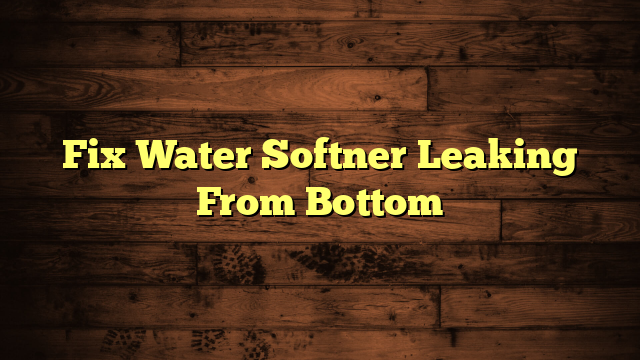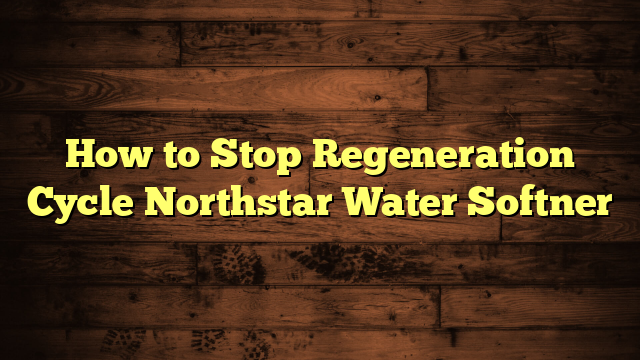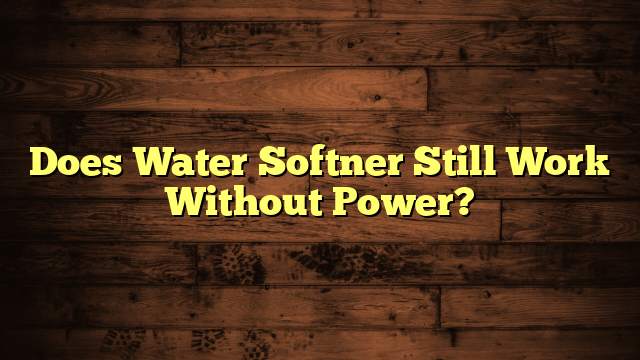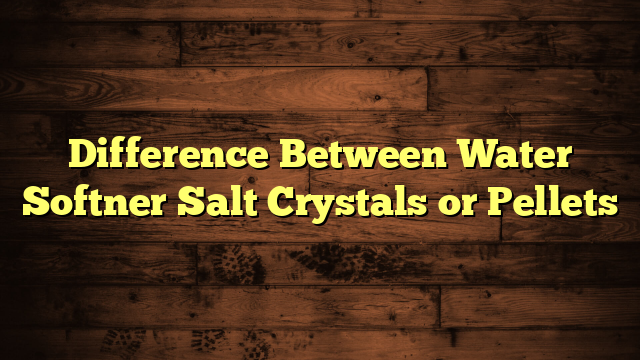How to Select a Water Softner
When you're selecting a water softener, you need to take into account several key factors to guarantee you make the right choice for your home. Start by evaluating your household's water usage and the hardness level of your water supply. From there, you'll want to explore the various types of systems available, like salt-based or magnetic options, and how they align with your lifestyle. But before you make a decision, it's essential to understand not just the system's efficiency, but also the long-term implications on both your budget and the environment. What will you prioritize?
Key Takeaways
- Assess your water hardness level in grains per gallon (gpg) to determine the appropriate type and capacity of the water softener needed.
- Consider the size of your household to calculate daily water consumption, which influences the softener's resin bead requirements.
- Choose between salt-based systems for effectiveness or magnetic softeners for low-maintenance and chemical-free solutions based on your preferences.
- Ensure proper installation space, proximity to the water source, and drain access to facilitate efficient operation and maintenance of the system.
- Factor in budget considerations, including initial costs, maintenance expenses, and potential long-term savings on energy and appliance longevity.
Understanding Water Hardness
Water hardness is an essential factor to evaluate when selecting a water softener. It refers to the concentration of minerals like calcium and magnesium in your water supply.
Understanding water hardness causes is vital because these minerals can build up over time, leading to various issues in your home. For instance, hard water can create limescale deposits in your plumbing and appliances, reducing their efficiency and lifespan.
You might notice that your appliances, such as dishwashers and water heaters, don't perform as well as they should. The effects on appliances can be significant, leading to increased energy consumption and costly repairs.
For example, if you regularly use hard water in your dishwasher, you may find that dishes come out cloudy or spotty, and your appliance may require more frequent servicing.
Types of Water Softeners
When choosing a water softener, it's crucial to understand the different types available to meet your needs. The two most common types are salt-based systems and magnetic softeners.
Salt-based systems, often referred to as ion-exchange systems, work by replacing hard minerals like calcium and magnesium with sodium ions. These systems are highly effective and widely used in households, providing noticeable improvements in water quality.
On the other hand, magnetic softeners use a different approach. They create a magnetic field that alters the properties of hard minerals, preventing them from forming scale. While they can be a more environmentally friendly option, their effectiveness can vary depending on the water hardness and specific conditions of your home.
Choosing between these types often comes down to your specific needs and preferences. If you're looking for a proven solution that requires regular maintenance, a salt-based system may be right for you.
However, if you prefer a low-maintenance, chemical-free option, magnetic softeners could be worth considering. By understanding these types, you can make an informed decision that best suits your household's water needs.
Sizing Your Water Softener
Properly sizing your water softener is vital for ensuring peak performance and efficiency. To determine the right size, you'll need to evaluate your household's water usage and hardness levels.
Start by calculating your daily water consumption, typically measured in gallons. A standard estimate is about 75 gallons per person per day. Multiply that by the number of people in your home to find your total daily usage.
Next, you'll need to know the hardness of your water, usually measured in grains per gallon (gpg). This information is significant because it affects how much resin beads your softener will need.
The capacity of your brine tank also plays a role, as it holds the salt that regenerates the resin beads.
Once you have these figures, you can use a sizing chart or consult with a professional to find the right softener capacity measured in grains. A properly sized unit not only enhances efficiency but also prolongs the life of your system.
Regeneration Processes
When it comes to water softeners, understanding the regeneration processes is essential for efficient operation.
You'll encounter two main types: time-based regeneration and demand-initiated regeneration, each with its own benefits.
Plus, you'll need to decide between manual and automatic options, depending on your specific needs and lifestyle.
Time-Based Regeneration
Time-based regeneration is a common process used in water softeners to maintain peak efficiency. This method schedules regeneration cycles based on predetermined time intervals, rather than your water usage. Typically, these cycles occur every few days or weekly, depending on the system settings. This approach guarantees that your softener consistently operates at ideal performance, helping to prevent scale buildup in your plumbing and appliances.
With time-based regeneration, you don't have to worry about monitoring water usage or adjusting settings frequently. The system automatically initiates the regeneration process to replenish the resin beads that remove hardness from the water.
While this method is straightforward, it may not be as effective as other systems, especially if your water usage varies considerably. If you find yourself away from home for extended periods or if your household water consumption fluctuates, consider how this might affect your softener's performance.
Demand-Initiated Regeneration
Demand-initiated regeneration offers a more responsive approach to water softening compared to time-based systems. This method triggers regeneration based on actual water usage, ensuring you only soften your water when necessary.
The demand benefits of this system can lead to significant savings in water and salt, making it an efficient choice for many households.
Here are four key advantages of demand-initiated regeneration systems:
- Enhanced Regeneration Timing: They regenerate only when the resin is saturated, preventing unnecessary cycles.
- Cost-Effective: By reducing water and salt usage, you can save money on your utility bills and maintenance costs.
- Consistent Water Quality: You'll enjoy soft water whenever you need it, ensuring peak performance across your household.
- Environmental Impact: Using less water and salt means a lower environmental footprint, making this option more sustainable.
Manual vs. Automatic Options
Choosing between manual and automatic regeneration options can greatly impact your water softening experience.
Manual controls give you the power to decide when the system regenerates, allowing for flexibility based on your household's water usage. If you know your water demands fluctuate, this could work well for you. However, it requires a bit of attention; you'll need to monitor your system and schedule regenerations accordingly.
On the other hand, automatic settings take the guesswork out of the process. These systems automatically regenerate based on your household's water consumption or a preset schedule. This convenience means you won't have to remember to initiate the process, ensuring your water softener is always ready to deliver soft water when you need it.
While manual options can save money upfront, automatic systems often prove to be more efficient in the long run, optimizing salt usage and reducing waste.
Ultimately, your choice should align with your lifestyle and preferences. Consider how much control you want over the regeneration process and whether the convenience of automatic settings outweighs the potential savings of manual controls.
Evaluating Efficiency Ratings
When selecting a water softener, understanding efficiency ratings is essential.
These ratings help you compare how effectively different models soften water while also considering their energy usage.
Understanding Softener Ratings
Understanding the efficiency ratings of water softeners is essential for making an informed decision.
You'll encounter various rating systems that help you gauge the performance of different models. These ratings often reflect how effectively a softener can remove hardness minerals from your water, which is vital for achieving the desired softness scale.
When evaluating softener ratings, consider the following key factors:
1. Grains per Regeneration: This
Comparing Energy Efficiency
Evaluating a water softener's energy efficiency can considerably impact your long-term costs and environmental footprint. When you're looking to compare different models, it's crucial to reflect on how they utilize energy sources and their efficiency ratings. Below is a table that highlights key factors to help you make informed efficiency comparisons.
| Model | Energy Source | Efficiency Rating |
|---|---|---|
| Model A | Electricity | 95% |
| Model B | Salt | 90% |
| Model C | Dual-Fuel | 92% |
| Model D | Solar | 98% |
As you analyze these options, focus not just on the initial price but also on how much energy each model will consume over time. Higher efficiency ratings typically indicate lower operating costs, which can save you money in the long run. Moreover, choosing a more energy-efficient model can help reduce your home's carbon footprint, contributing positively to the environment. So, take your time comparing these efficiency ratings and make a choice that aligns with both your budget and eco-friendly goals.
Installation Considerations
Choosing the right location for your water softener is essential for ideal performance. You want to verify the installation meets your plumbing requirements and keeps installation costs manageable. A well-placed unit can greatly enhance its effectiveness and longevity.
Here are some key installation considerations:
- Proximity to Water Source: Place the softener close to your main water line to minimize plumbing modifications and reduce installation costs.
- Drain Access: Confirm there's easy access to a drain for the discharge line, which is critical for proper function.
- Temperature Control: Avoid areas prone to extreme temperatures, like unheated basements, as cold can affect performance and efficiency.
- Space Requirements: Make certain you have enough space for the unit and maintenance access. A cramped installation can complicate future servicing.
Maintenance and Care
Once your water softener is installed, regular maintenance and care are vital to keep it running smoothly.
Start with routine checks to guarantee everything is functioning properly. Check the salt level in the brine tank at least once a month, and refill it as needed. Low salt levels can affect the unit's efficiency, leading to hard water problems.
Cleaning procedures are also important. You should periodically clean the brine tank to remove any sediment or buildup. This not only extends the life of your softener but also maintains its performance.
If your unit has a pre-filter, remember to replace it according to the manufacturer's instructions, typically every six months or so.
Additionally, consider scheduling a professional inspection annually. They can catch any potential issues early, saving you time and money in the long run.
Keep an eye out for changes in water quality, such as increased hardness or unusual tastes, as these can signal that your softener needs attention.
Budgeting for a Water Softener
Budgeting for a water softener involves more than just the initial purchase price; you'll want to reflect on installation costs, ongoing maintenance, and salt replenishment expenses.
While the initial costs might seem significant, think about the long-term savings you can achieve by investing in a quality system.
Here's a breakdown of what to take into account:
- Initial Purchase Price: Expect to pay anywhere from a few hundred to over a thousand dollars, depending on the model and features.
- Installation Costs: Factor in whether you'll DIY or hire a professional. Installation can range from $100 to $500.
- Maintenance: Regular upkeep is essential. You might spend $50 to $150 annually on maintenance services or parts.
- Salt Replenishment: Depending on your water hardness and usage, you'll need to buy salt regularly, costing around $5 to $20 per month.
Frequently Asked Questions
How Do I Know if My Water Is Hard?
To know if your water's hard, check for signs like scale buildup or soap scum. You can use testing methods like test strips or send samples to a lab to measure water hardness accurately.
Can Water Softeners Remove Existing Scale Buildup?
Yes, water softeners can help with scale removal, but they're more effective at preventing future buildup. For existing issues, you might need specific cleaning solutions to completely eliminate the scale from your plumbing and fixtures.
Are There Any Health Risks Associated With Softened Water?
Softened water can raise health concerns for some, particularly those on sodium-restricted diets, since it often contains higher sodium levels. It's crucial to evaluate these factors when deciding if softened water's right for you.
Will a Water Softener Affect My Drinking Water Taste?
A water softener can affect your drinking water taste by altering its mineral content. While some notice subtle taste changes, others may not detect any difference at all. It really depends on your personal preference.
How Long Does a Water Softener Typically Last?
Ever wondered how long your water softener will last? Typically, it lasts about 10-15 years with proper maintenance. Watch for replacement signs like reduced efficiency or salt buildup to guarantee peak performance.
Conclusion
Choosing a water softener might seem like a walk in the park, but it's more like a stroll through a minefield—get it wrong, and you're left with hard water and a headache. By understanding your household's needs and weighing options diligently, you can sidestep the common pitfalls. So, whether you opt for a salt-based system or a low-maintenance model, remember: the right choice will make your water feel softer than a cloud, not a rock!







